Have you ever considered your grocery store produce isle as a source for herb plants? Me neither, until recently…
I know that one way to make more plants is to propagate them from cuttings. This is a simple process of cutting a stem of new growth from an existing plant an allowing it to root in water or by using a rooting hormone.
Herbs like sage and rosemary are quick to produce roots from cuttings. Of course, this only works if you have existing plants to take cuttings from.
But, if you don’t have plants readily available, an inexpensive and easy way is to use packaged rosemary (or other woody-stem herbs) that are found in your grocery store’s produce section.
Yes, you can shop the produce aisle to supply plants for your herb garden!

The Discovery
I discovered this quite by accident a few years ago, and it is now the primary way that I grow rosemary plants (and it also works for basil).
If you’ve ever tried growing rosemary from seed, you know it’s difficult to germinate, and if you are successful, it can take forever for the plants to grow to a size where you can harvest stems.
But, growing rosemary from “jewel” packs found at the grocery store is super easy.
Several years ago in November, I purchased a small packet of about eight rosemary stems from my local grocery. I love having fresh herbs on the kitchen counter, so I placed them in a glass of water until I was ready use them. Most of the stems went into our Thanksgiving dinner, but a few remained in the glass – so I just left them on the counter.
And then a wonderful thing happened; the remaining stems began to sprout tiny roots. That really piqued my interest! Knowing how difficult it can be to start rosemary from seed, I suddenly realized I might have a few rosemary plants growing on my counter, if I could get them to take root in soil.
Over the next few weeks, the roots grew stronger and longer and I was ready to take the next step and pot them into soil.
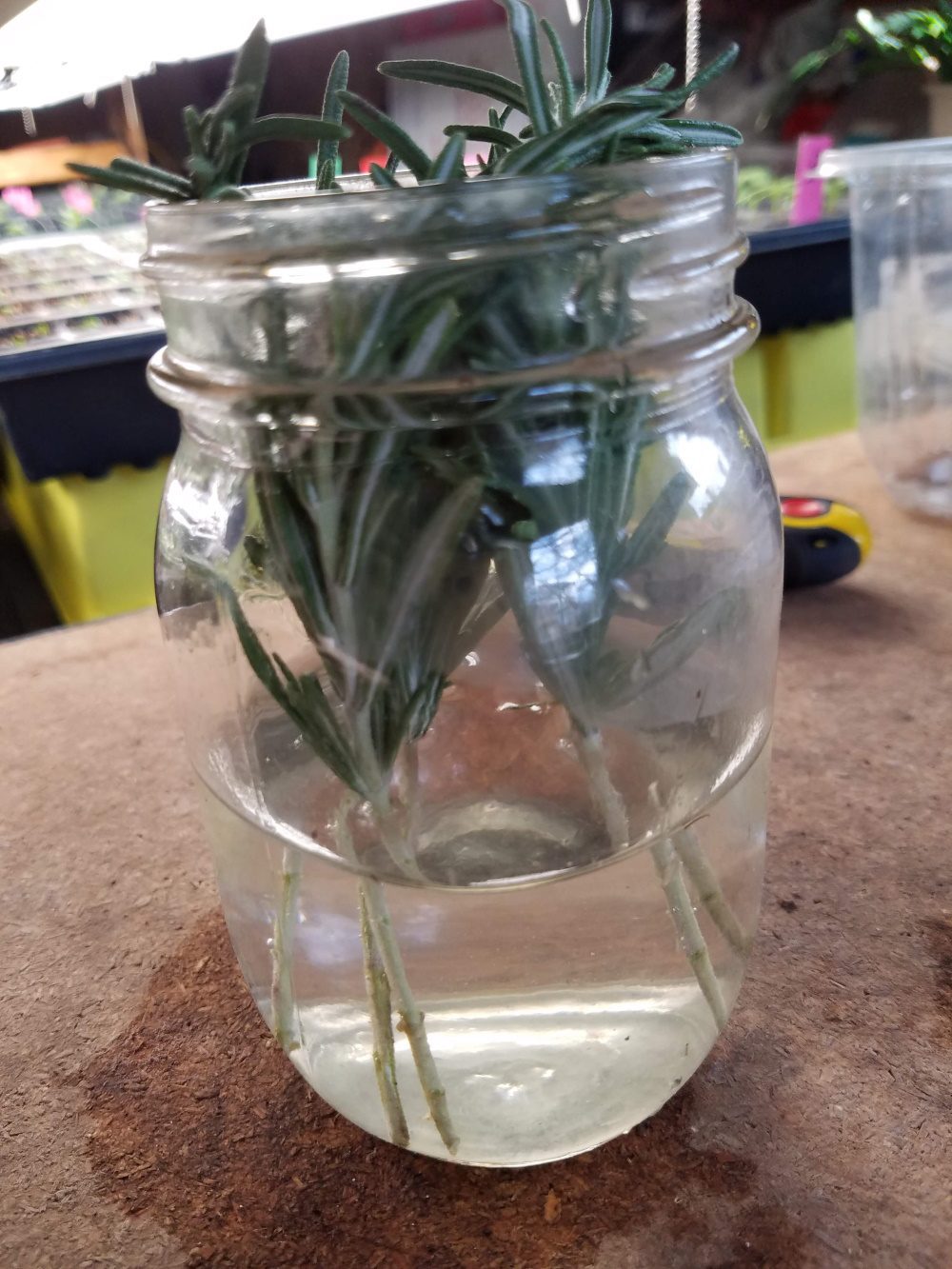
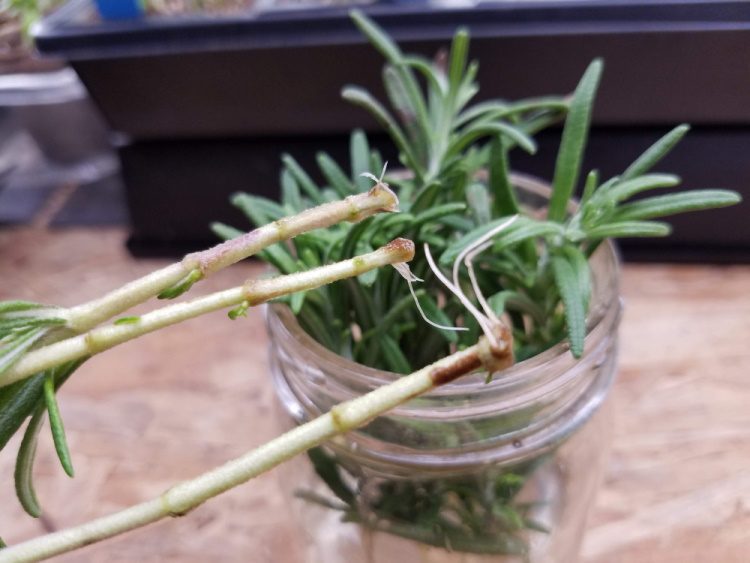
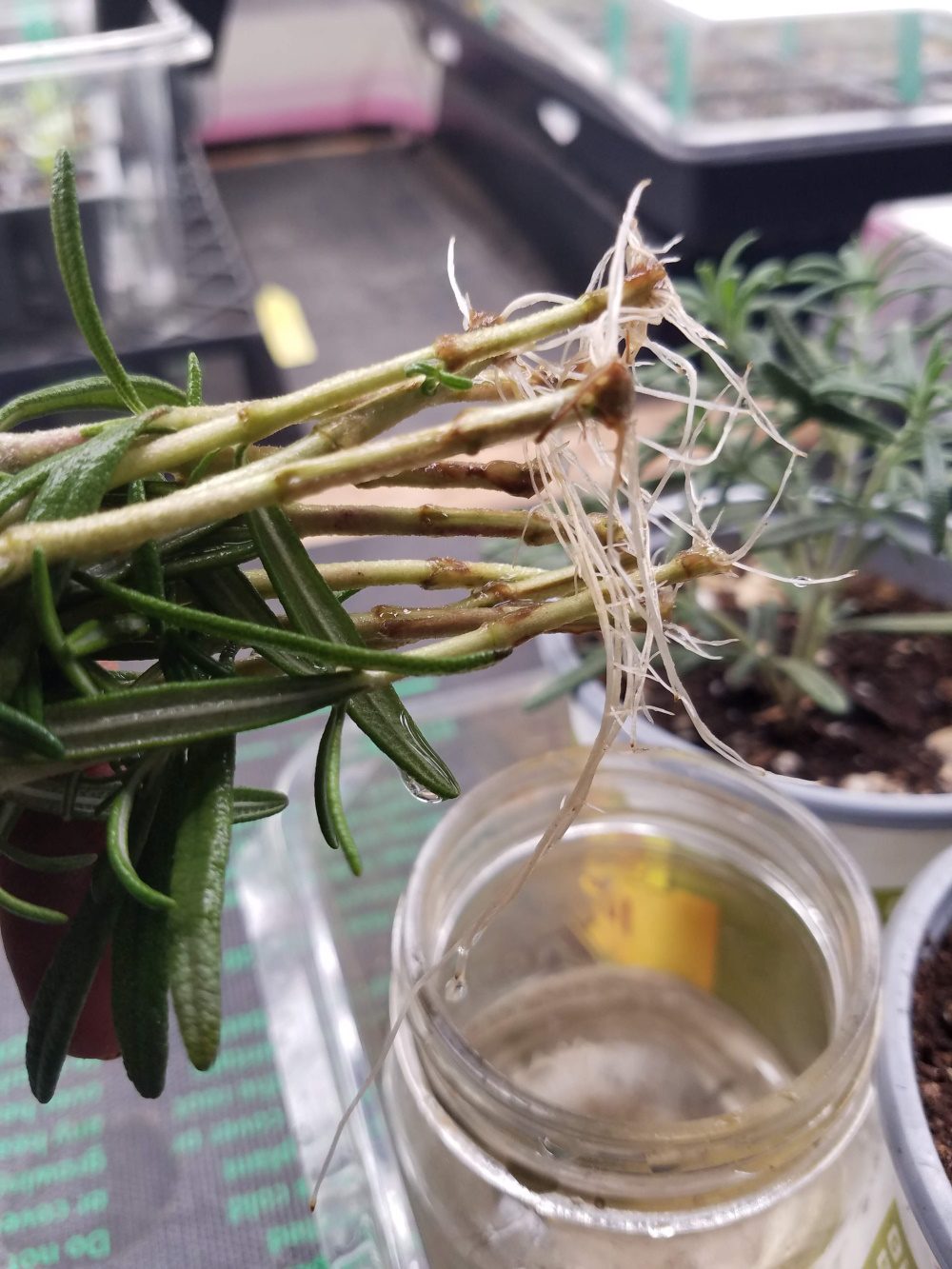
I used quality potting mix and kept them well watered after they were planted into the soil. It’s important to keep the soil moist, but not saturated, until the stems are established.
To my surprise, all the stems rooted and were eventually transplanted into my garden outdoors.
How to Prepare the Stems
The first stems I grew were just put in water with no expectations of roots emerging – yet it happened. Here are some tips for successful rooting:
- Choose rosemary stems that are less woody. These more tender stems seem to root better than woodier stem.
- Remove leaves from the bottom 2 to 3 inches of the stem.
- With a sharp knife or box-cutter blade, cut the stem on the diagonal just below a leaf node (where you just removed a leaf).
- Place the stems in a jar or glass and fill with water to just below the bottom leaves.
- Keep the jar in a warm spot and out of direct sunlight.
- Small roots will begin to appear in about two weeks. It can take up to 8 weeks for the roots to become long enough (about 3 inches) for transplanting. Be patient!
- Transplant the stems into a quality potting mix that drains well, along with a container that drains well too.
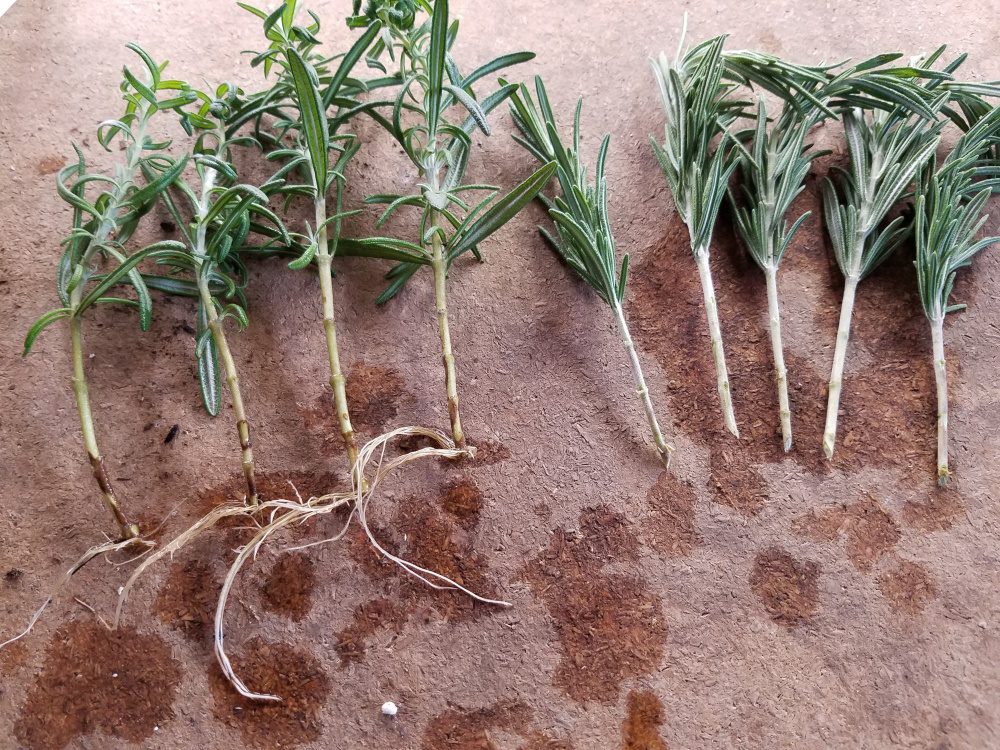
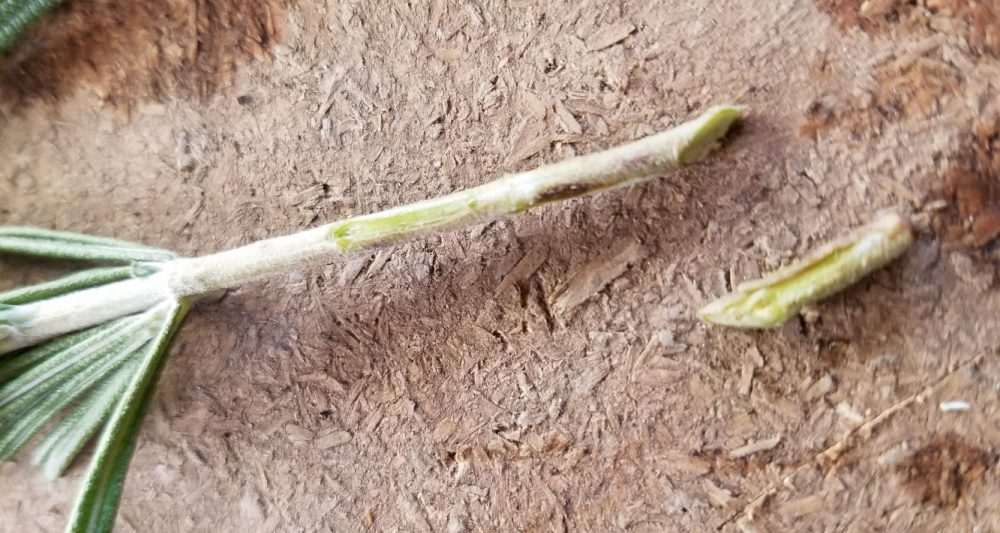
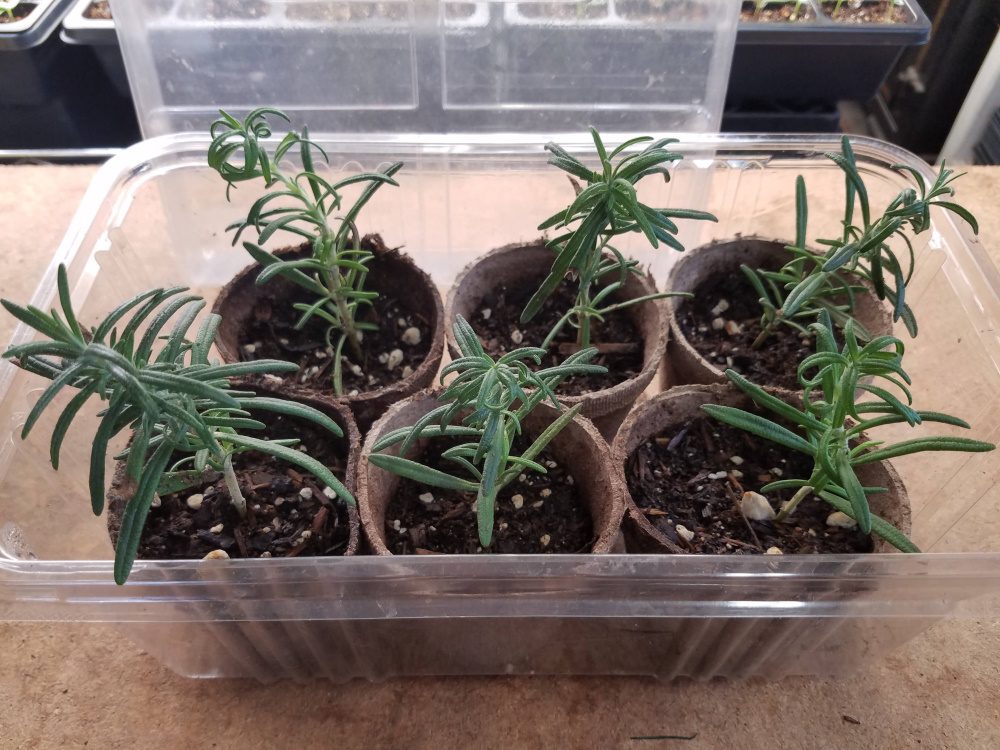
Because I also start many plants from seed, I had everything I needed on hand to pot the rosemary. I decided to initially pot the new plants into peat pots. These were the proper size for the new plants and it was easy to tell when they needed to be watered.
Small yogurt containers also work well, just make sure to punch drainage holes in the bottom.
As the plants grew, I eventually transplanted them into a larger container and finally, they were transplanted into my garden in the early summer.
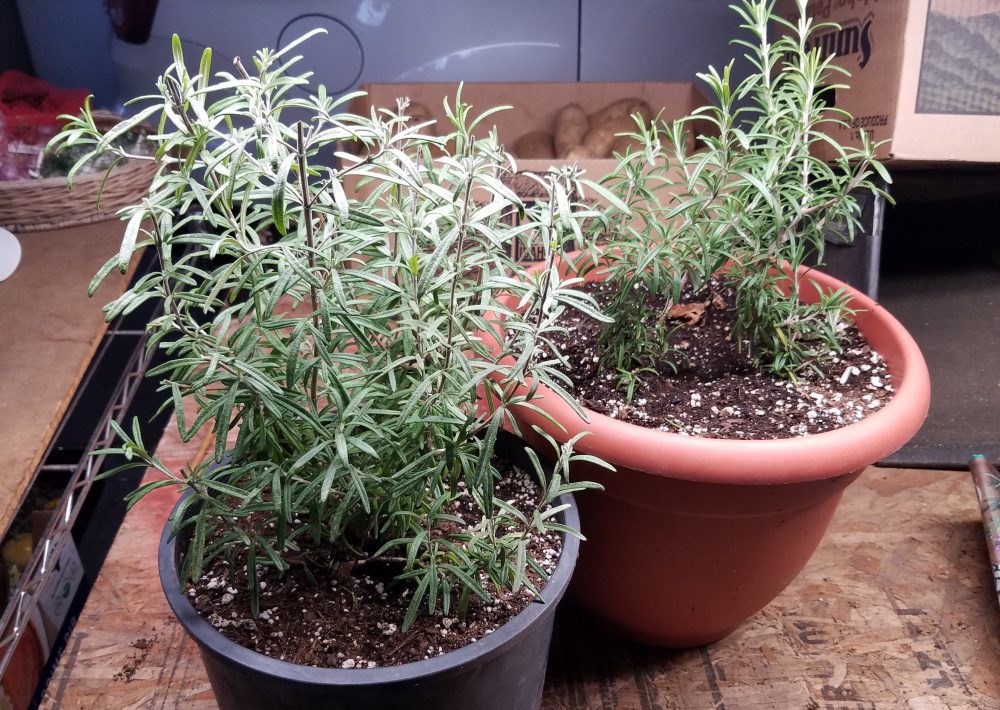
Grocery Store Basil
I’ve also had success with rooting Thai basil stems in water. Following the same process for rooting rosemary, I selected less woody stems and placed them in a jar of water.
The Thai basil sprouted roots in about a week and were potted up after a month in water. It was quick to become established and it grew so well, that I was able to transplant it outside in the summer. It grew over two feet tall and I was able to take multiple cuttings to root from it.
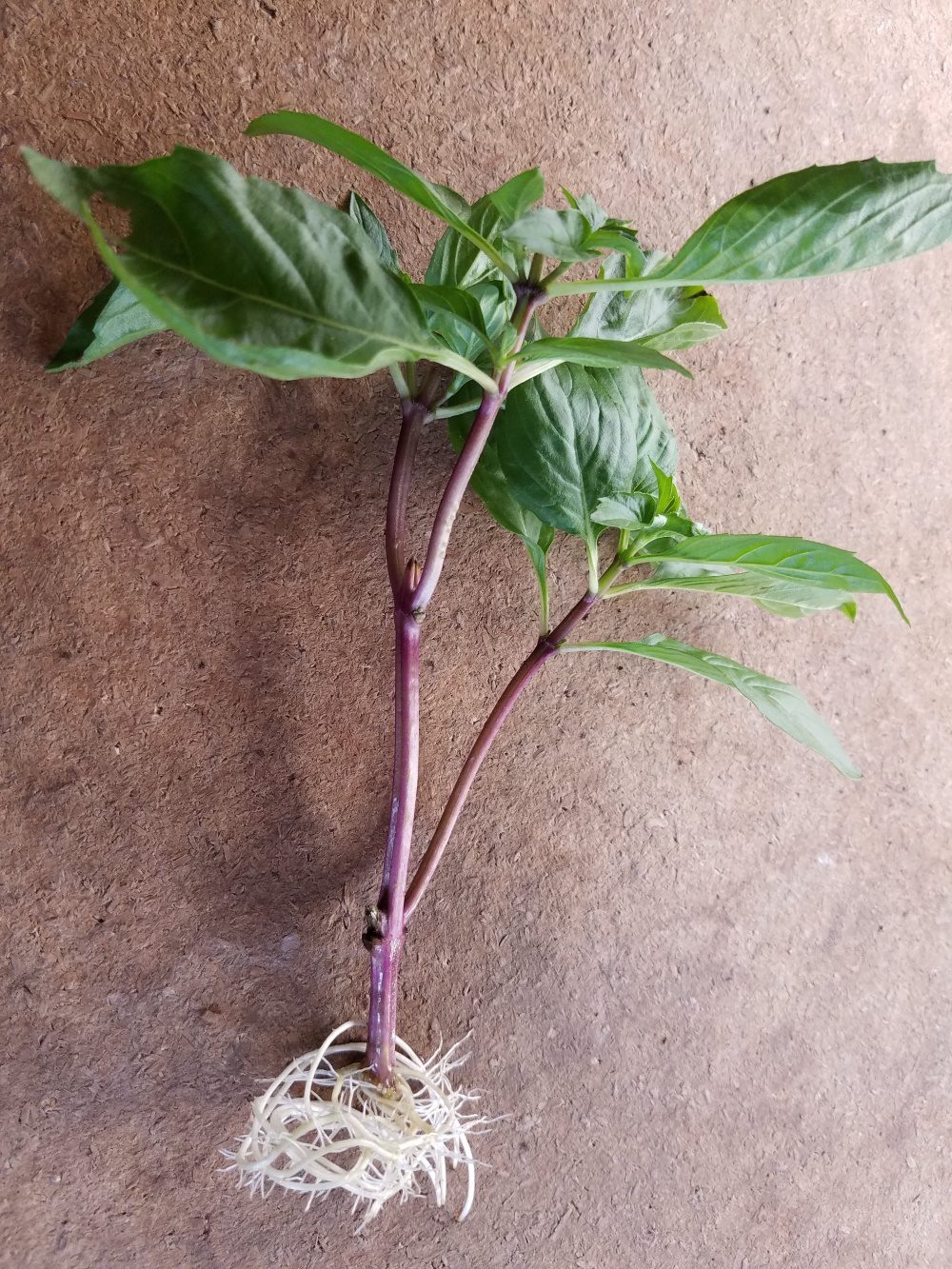
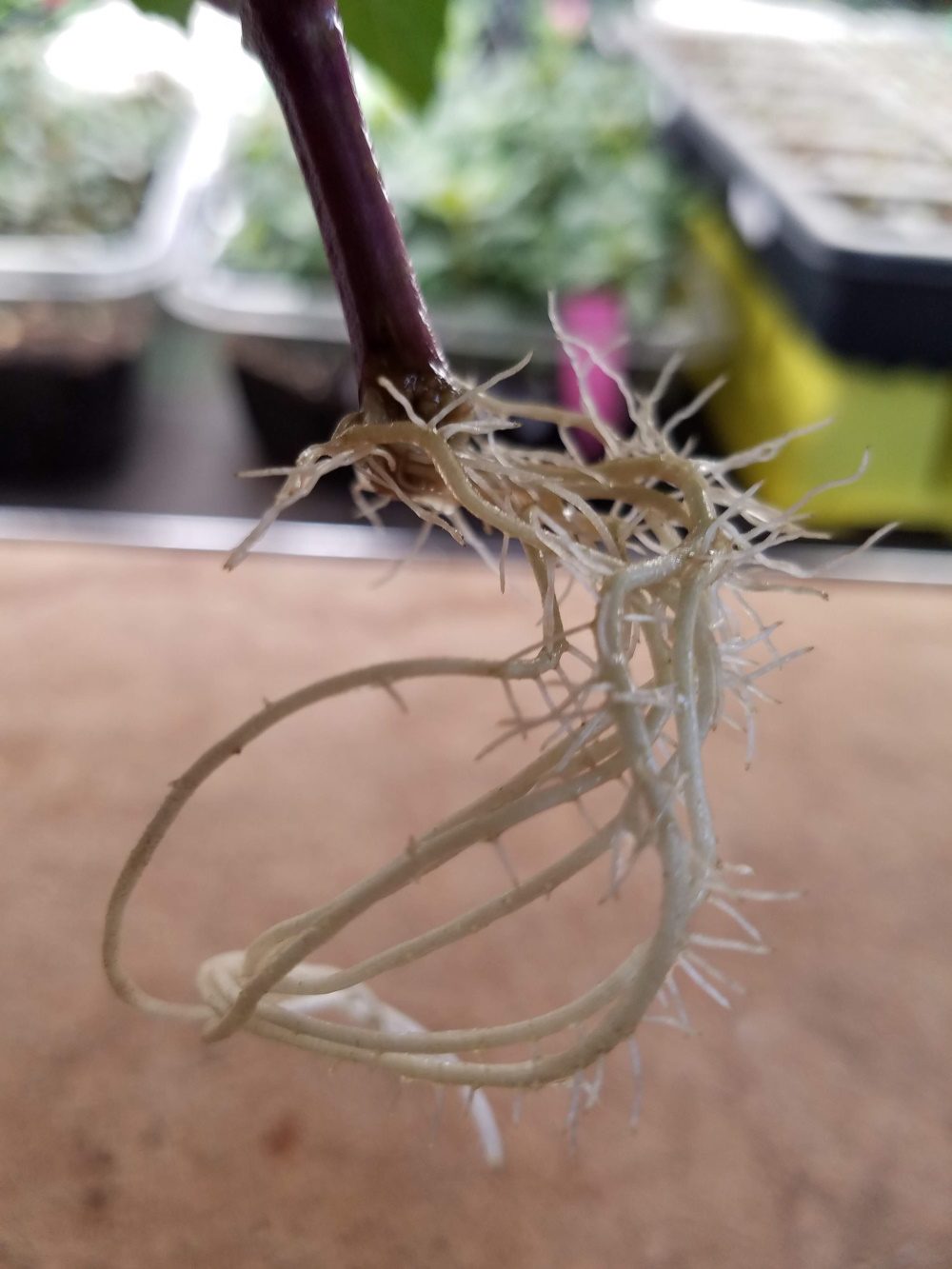

Now, what about that “living” basil that you find in the produce aisle? I know some people have tried to plant this in soil and haven’t had much luck. But, I’ve managed to have success with this by placing the basil in water to encourage additional root growth.
Living basil is usually grown hydroponically and if you look at the roots, you’ll see that the plants are grown in a material that resembles florist foam.
I carefully teased this material out from the roots and put the basil stems into water. I let the roots grow and when they were about 4 inches long, I planted the individual stems in potting soil.
I wasn’t sure if they would take to the soil and in fact, a couple didn’t make it, but several did! You’ll know pretty quickly if the plants are struggling and they aren’t going to make it.
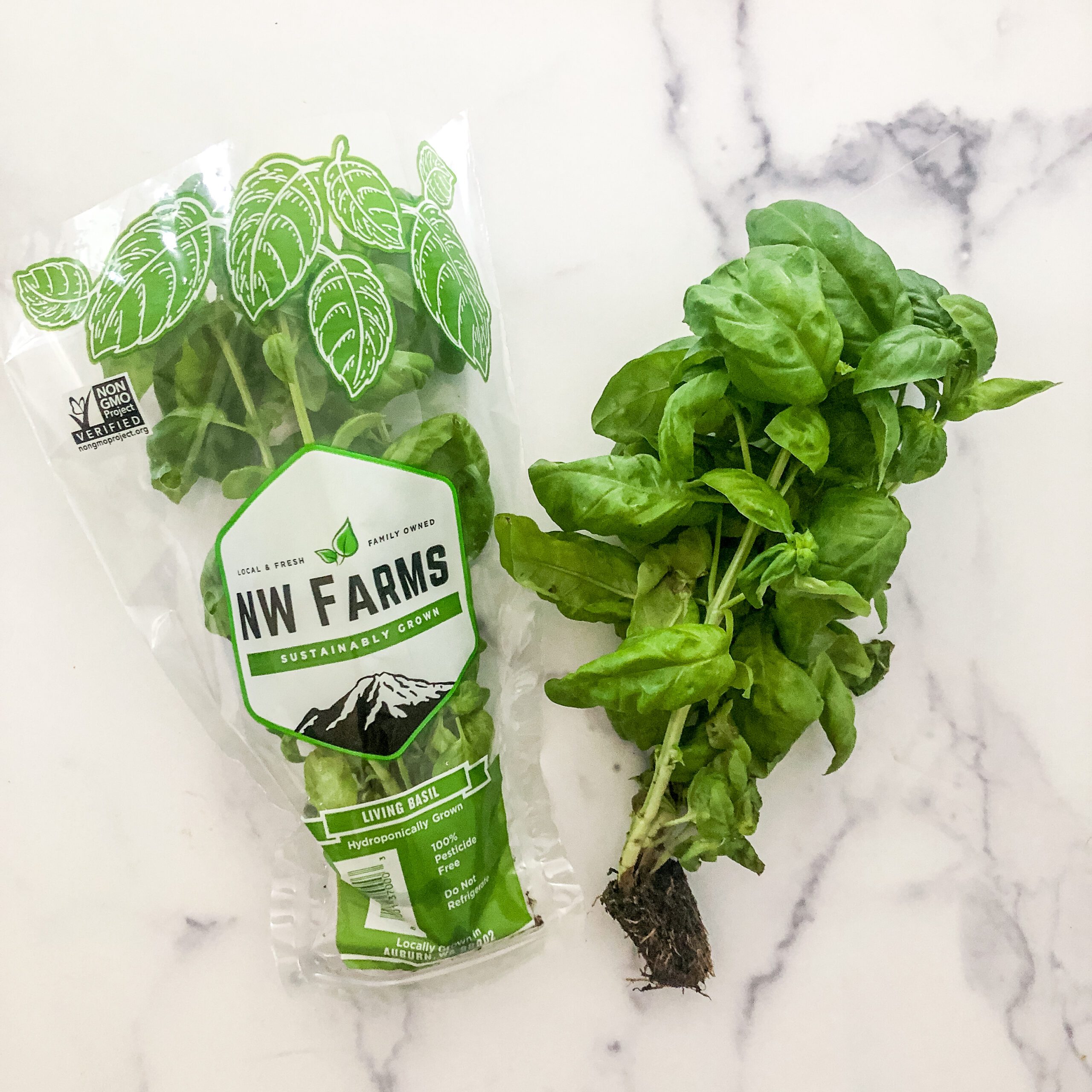
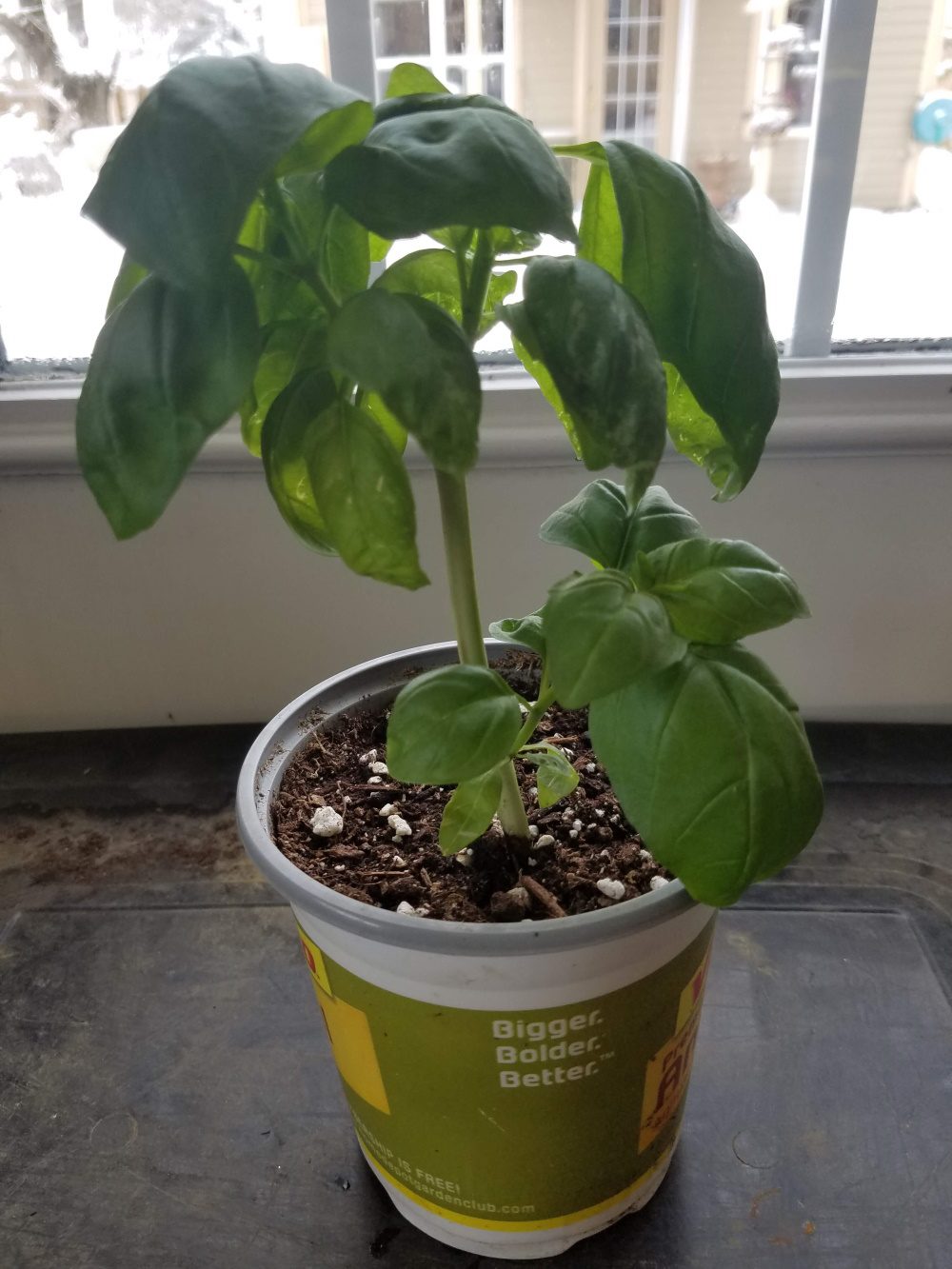
If you are looking for a fun “winter gardening” project, I encourage you to try growing a few herbs from your grocery store! Look for organically grown stems and give it a try.
It all started by accident for me and it turned into a very happy and successful experiment. I no longer buy rosemary plants at the garden center and I certainly don’t bother with growing them from seed, not when I can just cruise down the produce aisle and select my plants!
Want more? Listen to my Podcast: Growing Herbs Indoors.
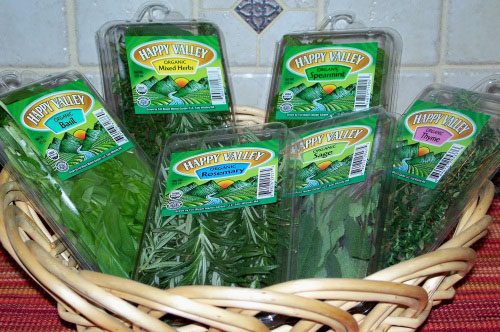


Thanks so much for this article!! Here I am, the day before Thanksgiving, with safe and rosemary for mg stuffing. As I was at the store today I thought…these packs of fresh herbs are pretty expensive…but what if I can grow plants from some of the cuttings? Thanks for the advice, and happy thanksgiving! 🙂
Hi Elaina, Glad you found the information helpful! Please let me know how it works for you. I have both rosemary and sage rooting in water now. — Candace